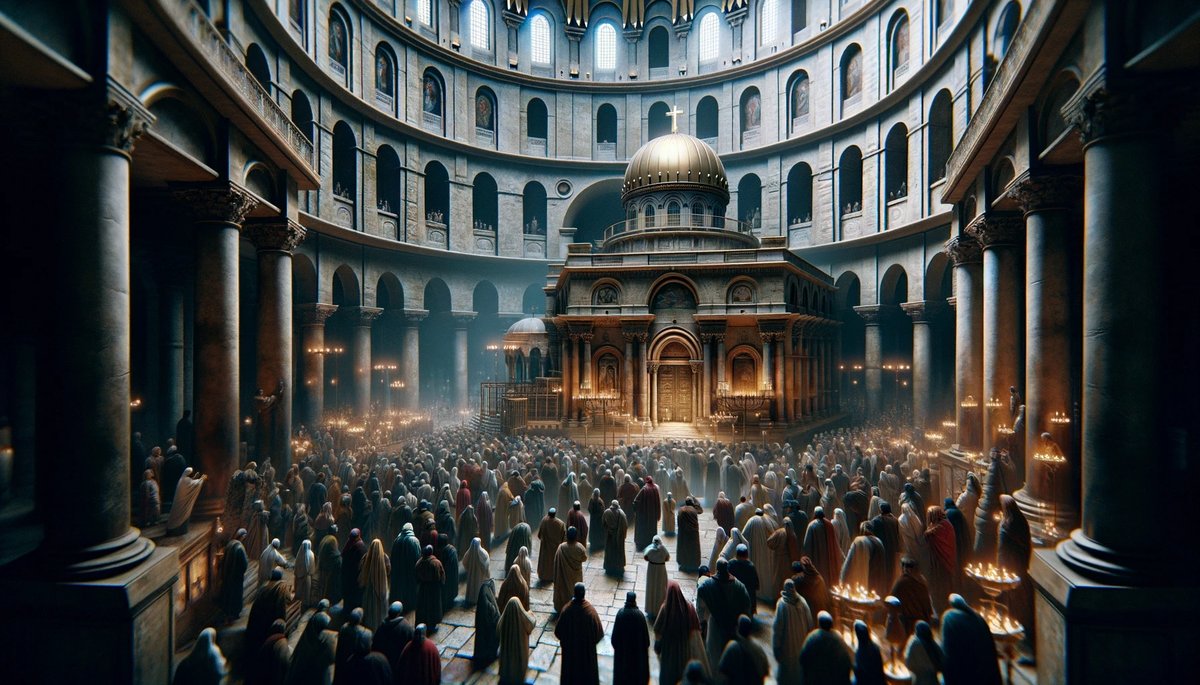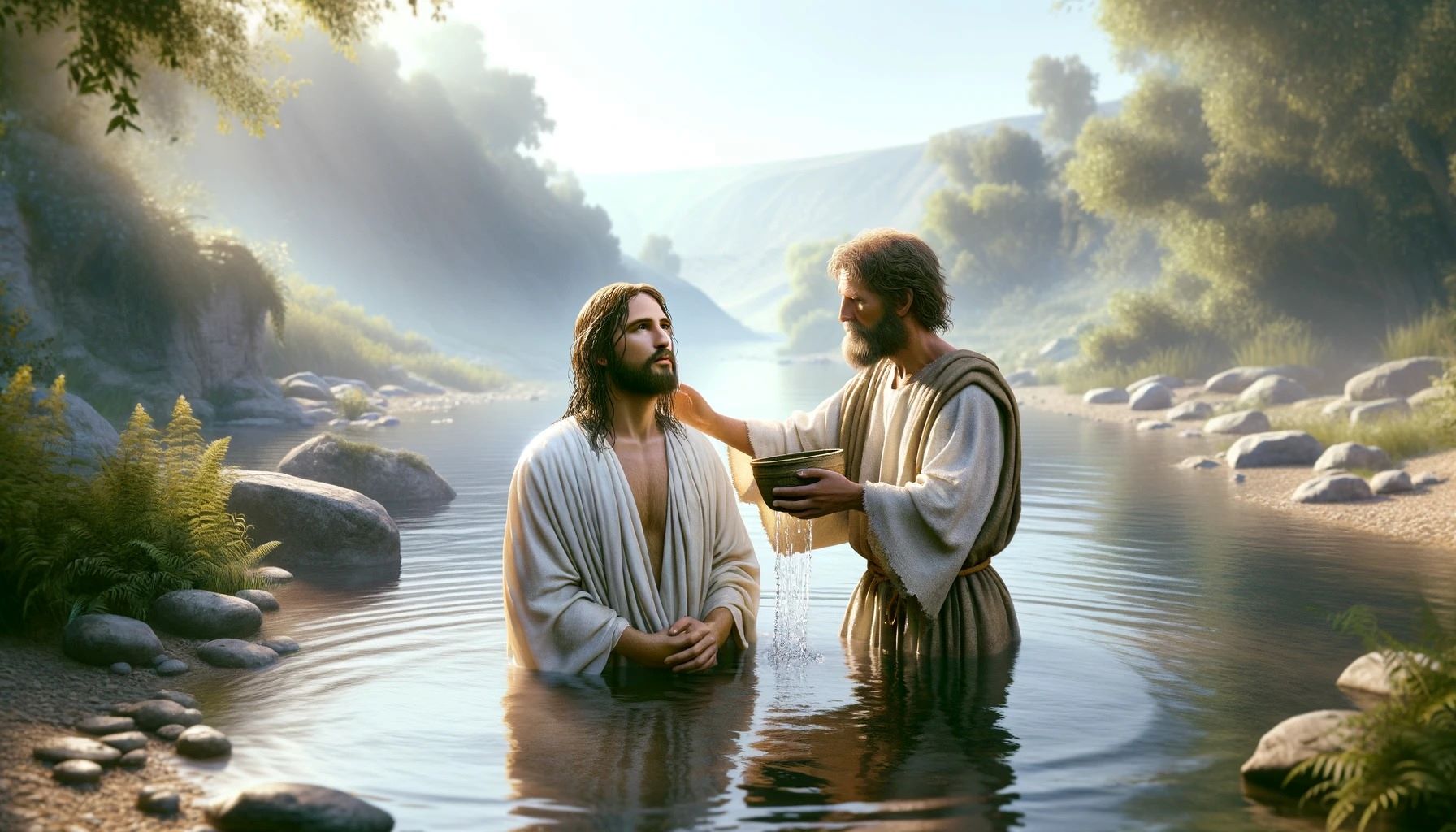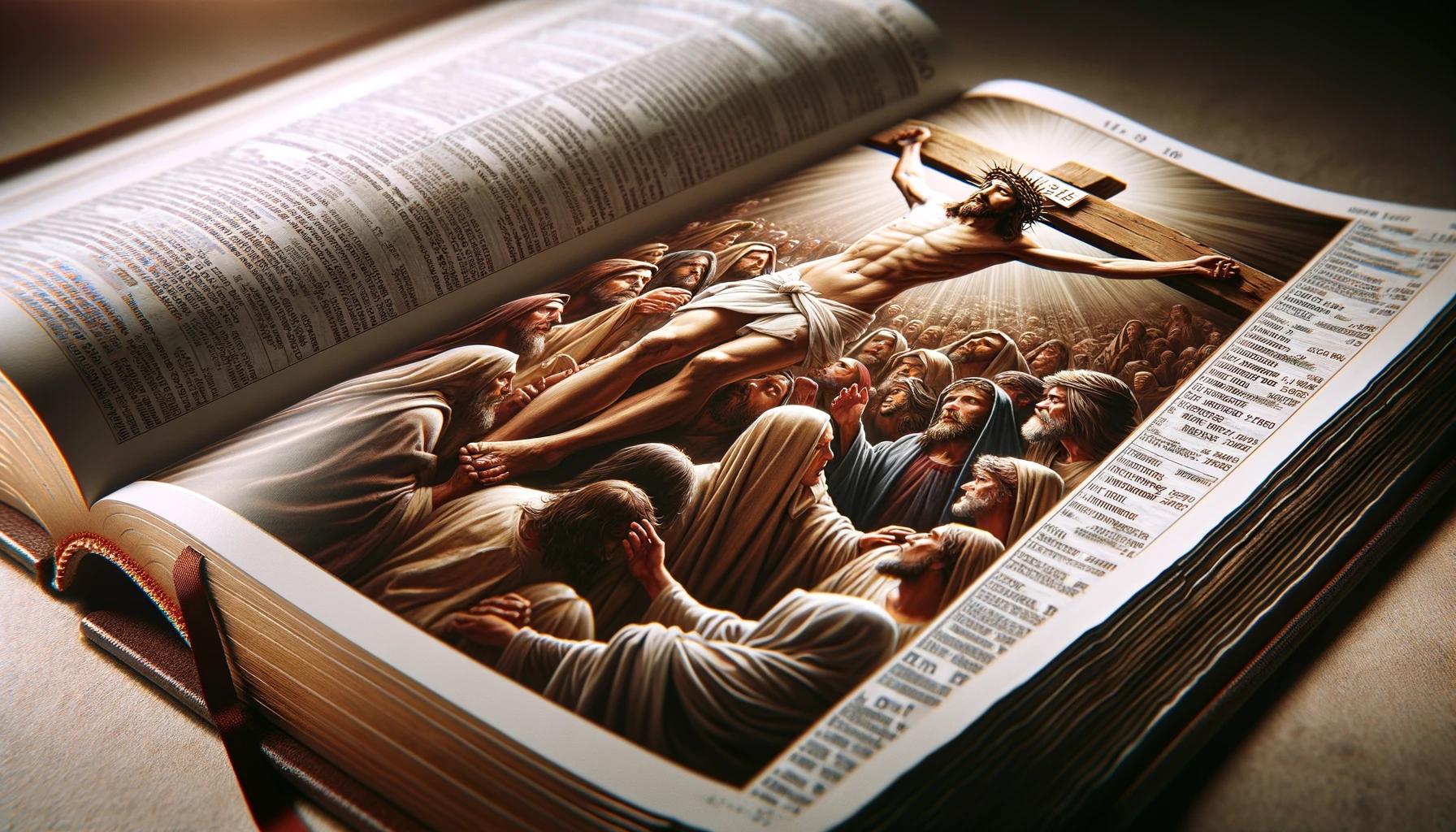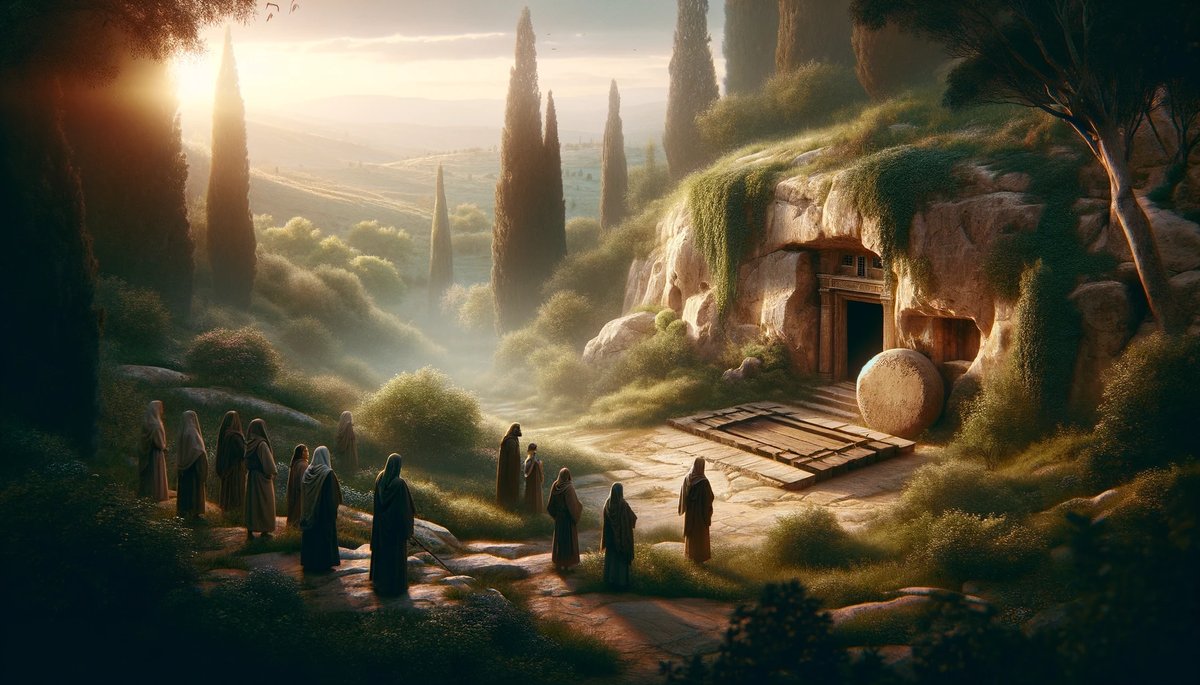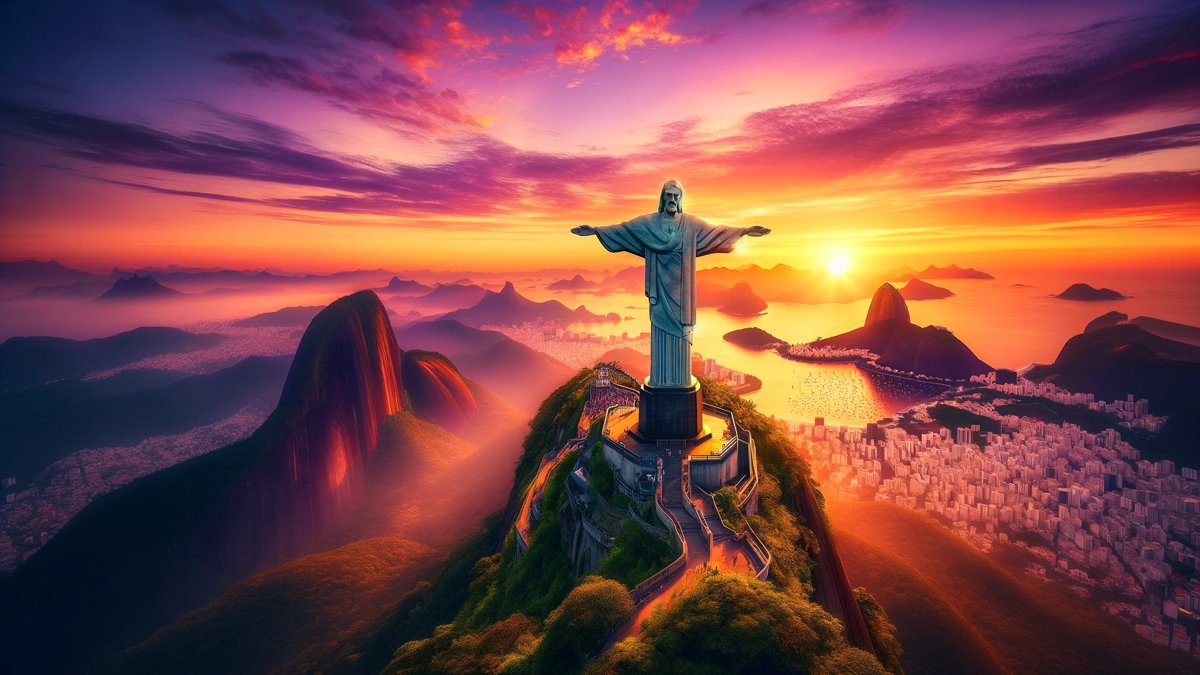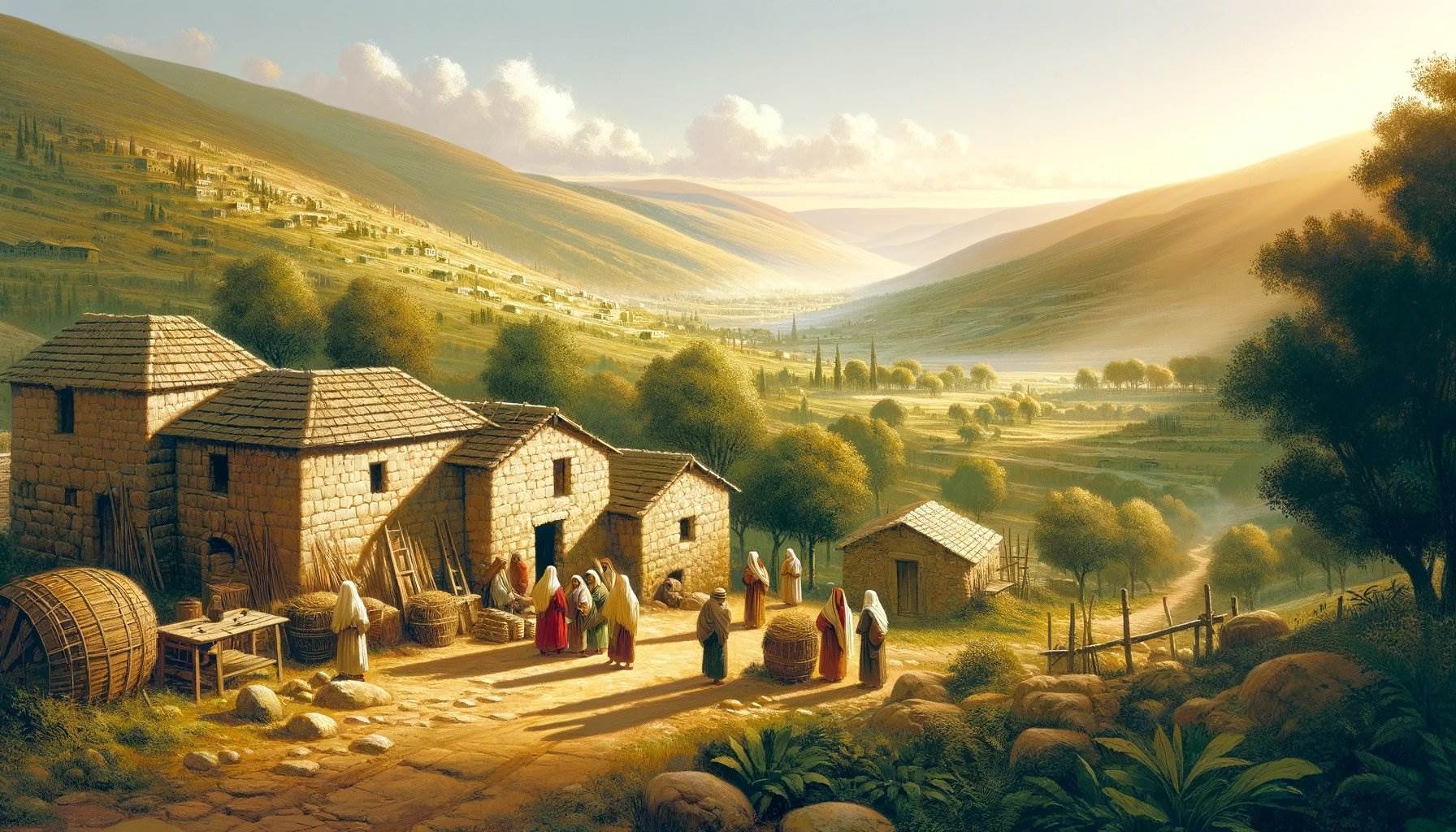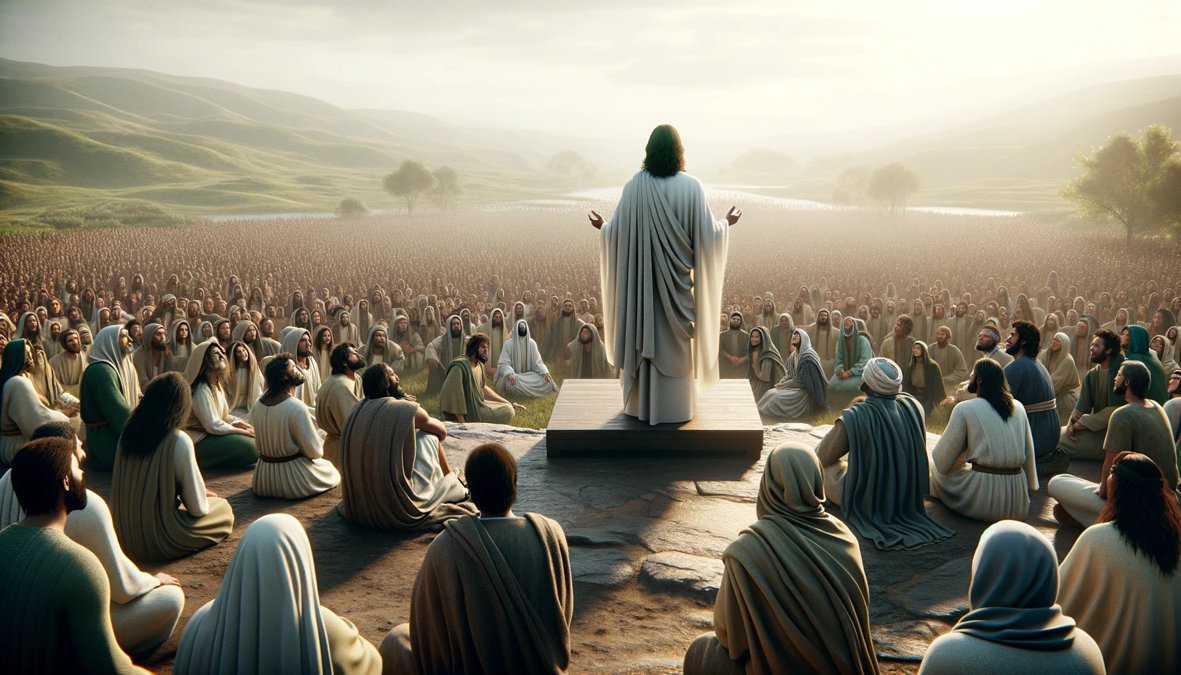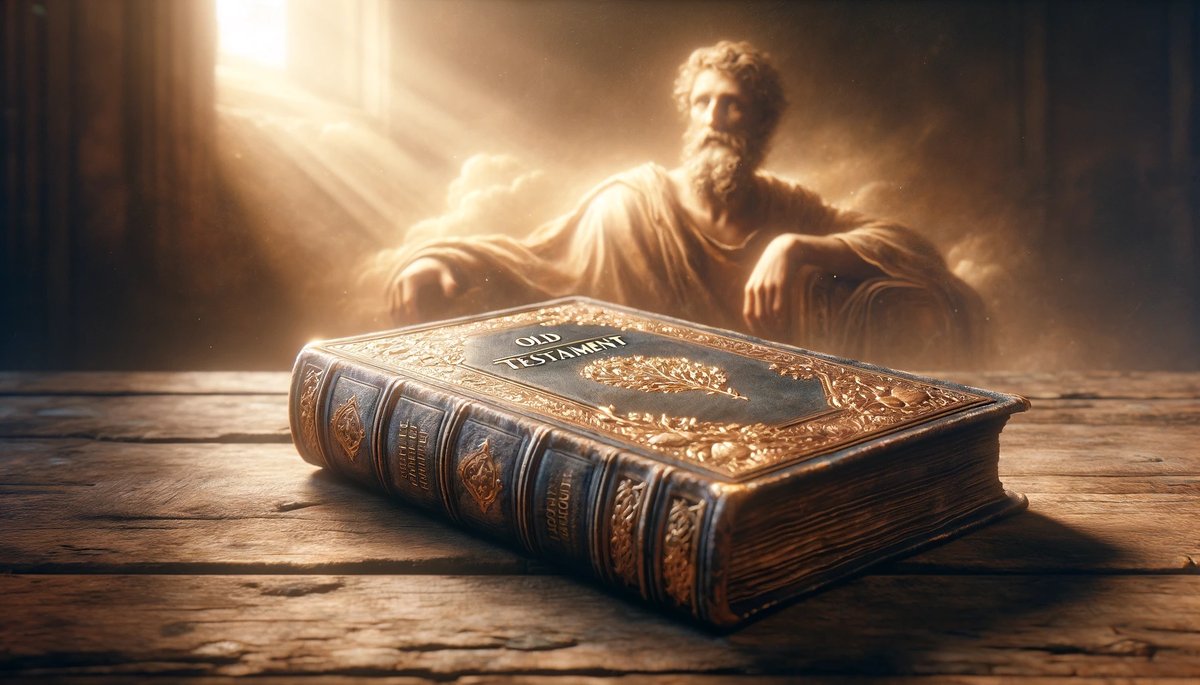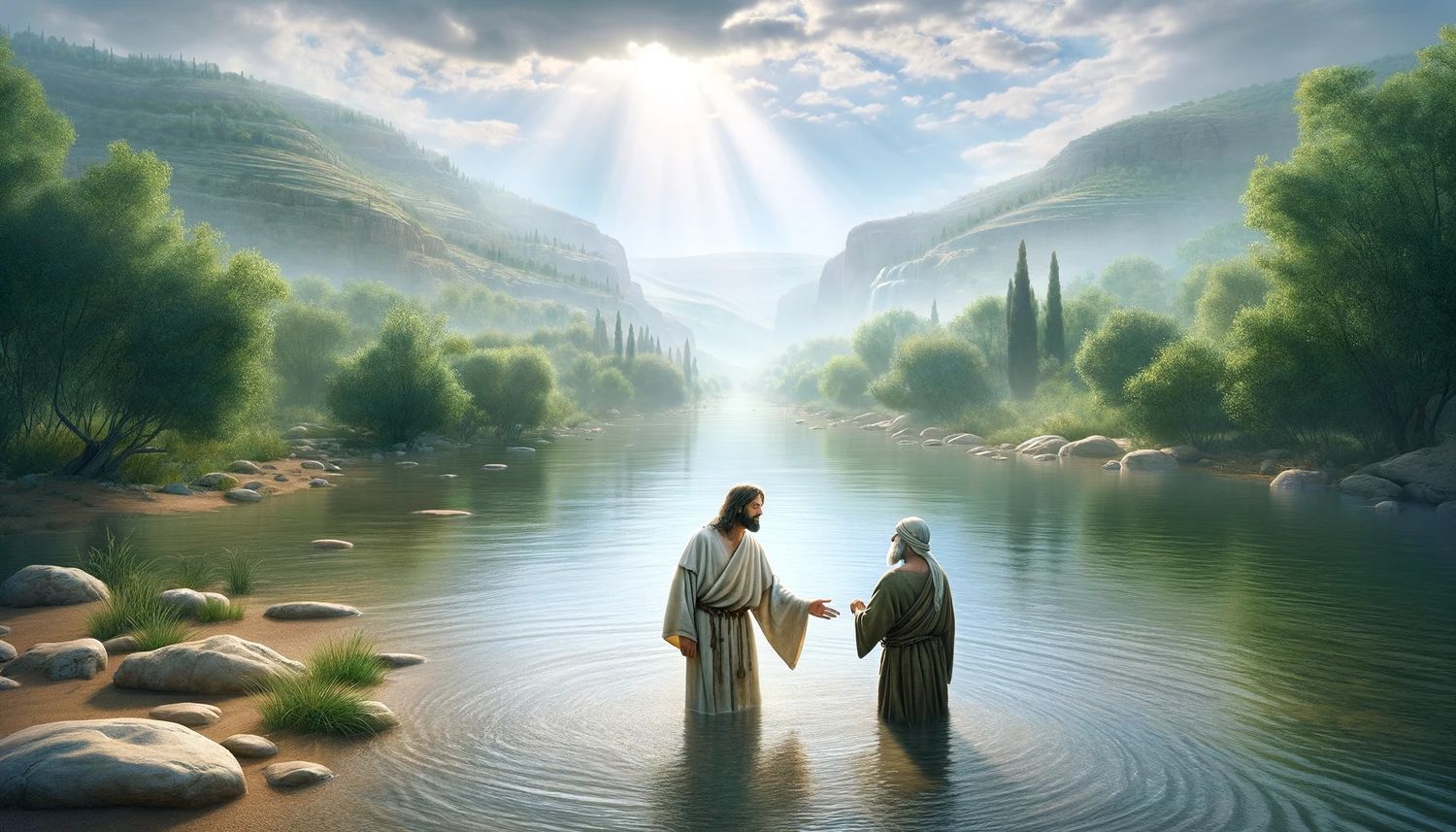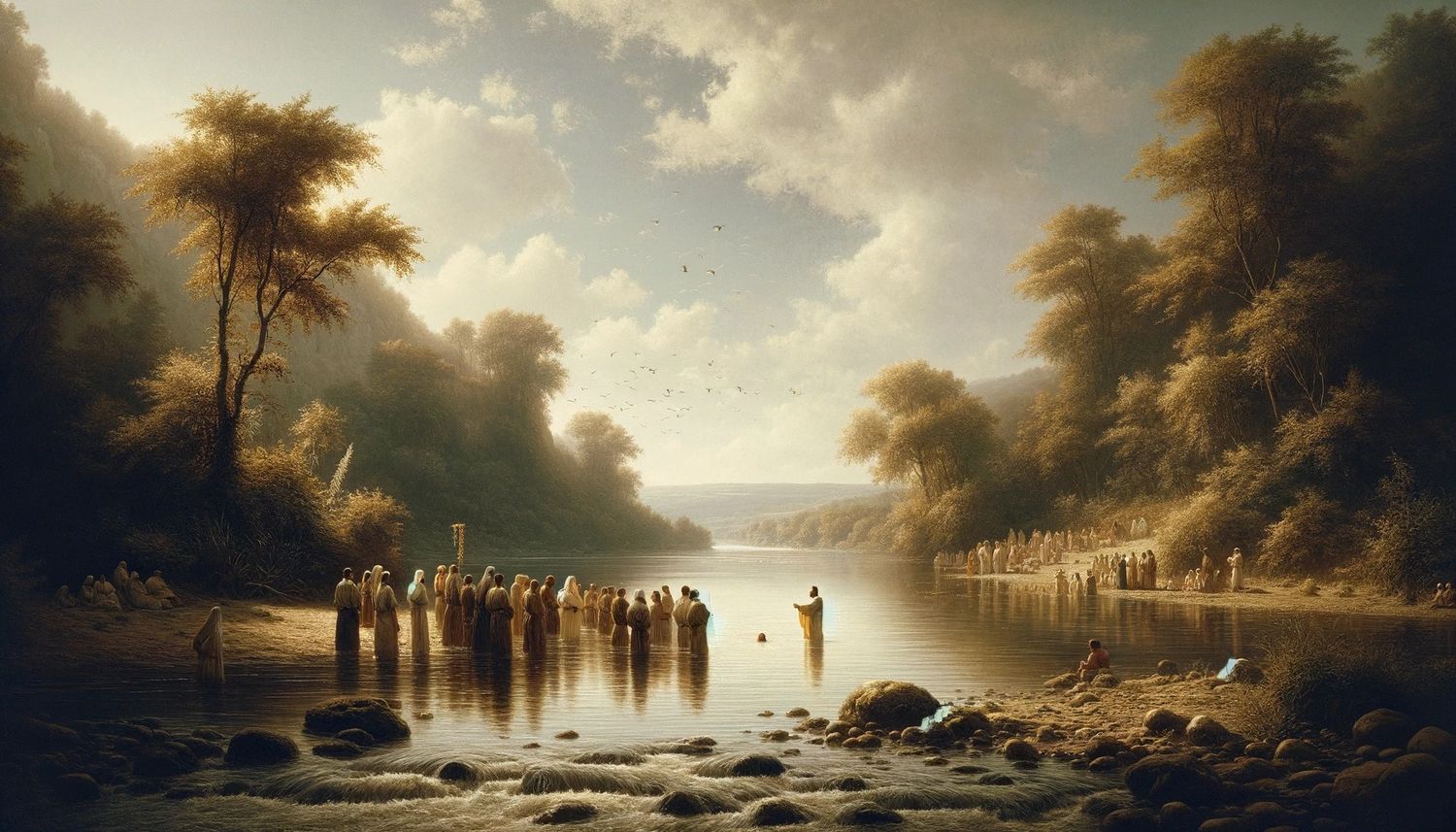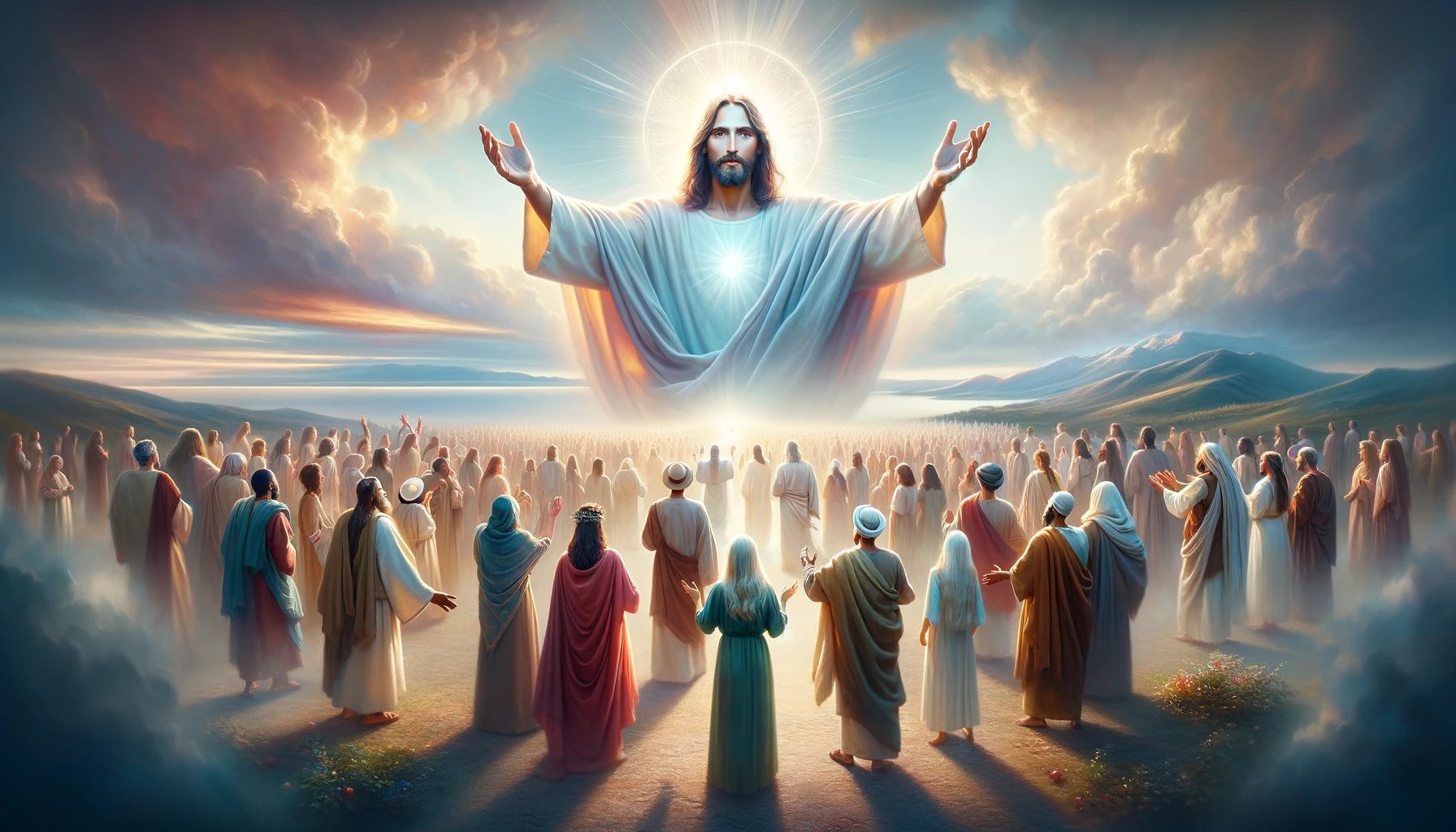Home>Christian Videos>Bible Stories>Where Did The Image Of Jesus Christ Come From
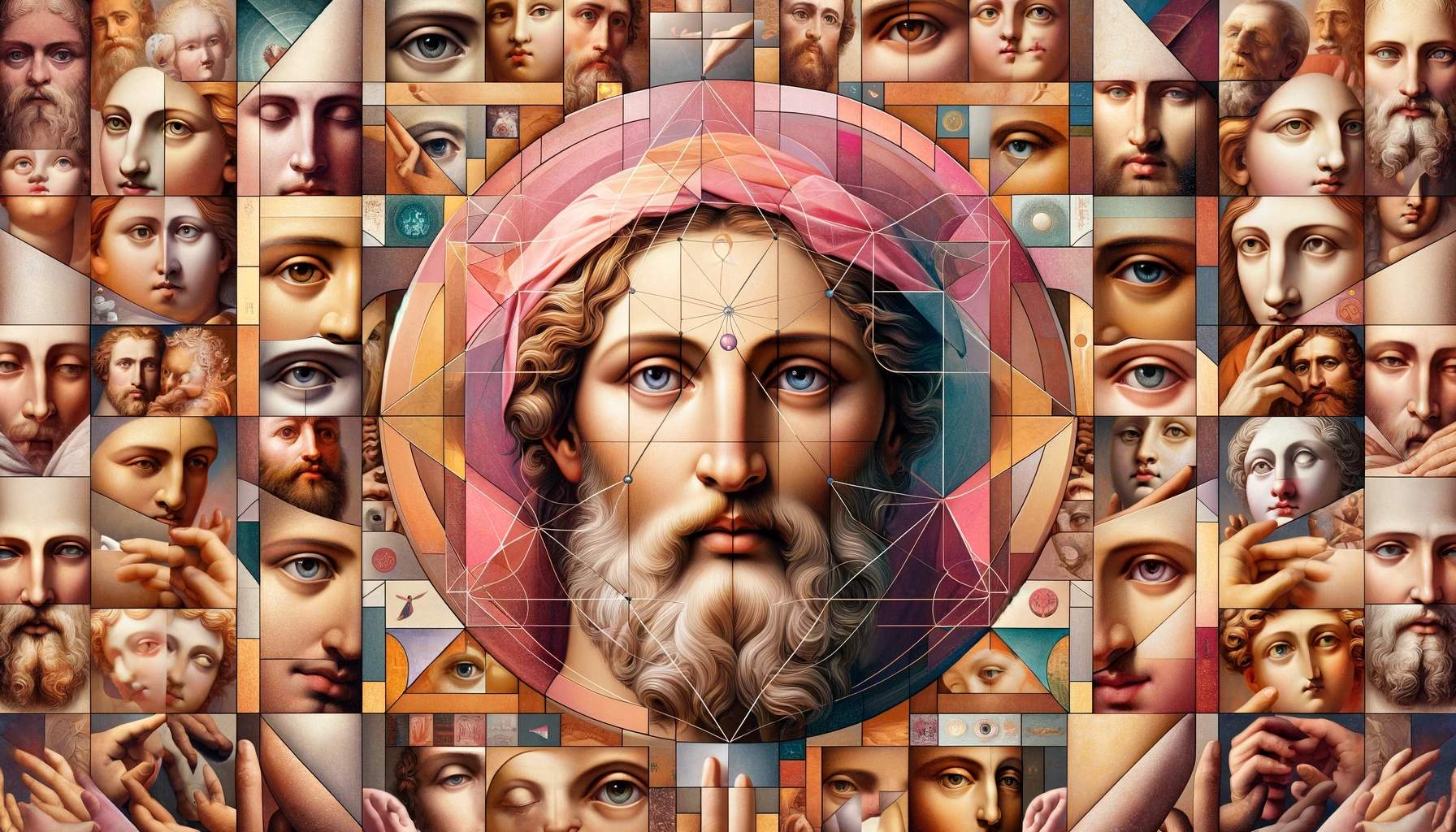

Bible Stories
Where Did The Image Of Jesus Christ Come From
Published: March 3, 2024
Peter Smith, Editorial Director at Christian.net, combines deep insights into faith, politics, and culture to lead content creation that resonates widely. Awarded for his contributions to religious discourse, he previously headed a major organization for religious communicators, enhancing dialogue on faith's societal impacts.
Discover the origins of the image of Jesus Christ and its significance in Bible stories. Uncover the historical and cultural influences that shaped this iconic portrayal.
(Many of the links in this article redirect to a specific reviewed product. Your purchase of these products through affiliate links helps to generate commission for Christian.net, at no extra cost. Learn more)
Table of Contents
The Historical Origins of Jesus Christ
The historical origins of Jesus Christ can be traced back to the 1st century in the region of Palestine, which was then under Roman rule. Jesus, also known as Jesus of Nazareth, was a Jewish preacher and religious leader who became the central figure of Christianity. According to the New Testament of the Bible, Jesus was born in Bethlehem and raised in Nazareth. His teachings and miracles gained a following, and he was eventually crucified in Jerusalem. The belief in Jesus as the Son of God and the savior of humanity formed the foundation of the Christian faith.
-
Jewish Roots: Jesus was born into a Jewish family, and his teachings often referenced Jewish scriptures and traditions. His role as the Messiah, or the promised deliverer, was rooted in Jewish prophetic literature and beliefs.
-
Influence of Roman Occupation: The Roman occupation of Palestine during Jesus' lifetime had a significant impact on the socio-political context in which he lived and preached. The Roman presence shaped the religious and cultural dynamics of the region, influencing the narrative of Jesus' life and the early spread of Christianity.
-
Early Christian Communities: After Jesus' death, his followers, known as the apostles, began spreading his teachings, forming the foundation of the early Christian church. The oral traditions and written accounts of Jesus' life and teachings contributed to the formation of the Gospels and the New Testament.
-
Historical Documentation: While the historical documentation of Jesus' life outside of religious texts is limited, references to him can be found in writings by historians such as Flavius Josephus and Tacitus, providing some insight into the historical context of Jesus' existence.
The historical origins of Jesus Christ are deeply intertwined with the religious, cultural, and political landscape of the 1st century, shaping the development of Christianity and the enduring legacy of Jesus as a central figure in the history of religion.
Read more: Where Did Jesus Christ Die
Depictions of Jesus in Early Christian Art
The early depictions of Jesus in Christian art provide valuable insights into the evolving visual representations of the central figure of Christianity. During the early centuries of the Christian era, artistic portrayals of Jesus varied in style and symbolism, reflecting the diverse cultural and theological influences of the time.
-
Symbolism in Early Christian Art: In the early Christian period, visual representations of Jesus often incorporated symbolic elements that conveyed theological messages. For example, the use of symbols such as the Good Shepherd, the Ichthys (fish), and the Chi-Rho symbol reflected the spiritual significance of Jesus as the shepherd of his followers and the divine savior.
-
Influence of Greco-Roman Art: The artistic traditions of the Greco-Roman world also played a significant role in shaping the early depictions of Jesus. Artists drew upon classical artistic techniques and conventions to portray Jesus in a manner that resonated with the cultural sensibilities of the Mediterranean region.
-
Development of Iconography: The emergence of Christian iconography, particularly in the Eastern Orthodox tradition, led to the establishment of specific visual motifs and symbols associated with Jesus. Icons depicting the Virgin Mary and the infant Jesus, known as the Theotokos, became prominent in Byzantine art, emphasizing the divine nature of Jesus as the Son of God.
-
Portrayals of Jesus in Catacomb Art: The catacombs of Rome and other early Christian burial sites contain some of the earliest surviving representations of Jesus. These artworks, often found in funerary contexts, depict Jesus in scenes such as the miracle of the loaves and fishes, the healing of the paralytic, and the raising of Lazarus, reflecting the themes of salvation and resurrection.
-
The Shift from Symbolism to Realism: Over time, there was a gradual shift from symbolic representations of Jesus to more realistic portrayals, particularly in the art of the Western Christian tradition. This transition marked a significant evolution in the visual depiction of Jesus, as artists sought to convey a more humanized and relatable image of the divine figure.
The depictions of Jesus in early Christian art not only served as expressions of faith and devotion but also reflected the cultural, theological, and artistic developments of the early Christian communities. These visual representations continue to hold historical and spiritual significance, offering a window into the rich tapestry of Christian art and its enduring portrayal of Jesus Christ.
The Evolution of the Image of Jesus in Western Culture
The evolution of the image of Jesus in Western culture reflects the dynamic interplay of religious, artistic, and societal influences that have shaped the visual representation of the central figure of Christianity. From the early Christian period to the present day, the portrayal of Jesus in Western art has undergone significant transformations, reflecting the changing perspectives and values of the cultures in which these representations emerged.
-
Early Christian Iconography: In the early centuries of Christianity, the image of Jesus in Western culture was characterized by symbolic and stylized representations, often drawing upon the artistic traditions of the Greco-Roman world. These early depictions emphasized the spiritual and divine nature of Jesus, employing symbols such as the Chi-Rho, the Good Shepherd, and the fish to convey theological meanings.
-
Medieval and Renaissance Art: The medieval and Renaissance periods witnessed a shift towards more naturalistic and humanized portrayals of Jesus in Western art. Influential artists such as Giotto, Leonardo da Vinci, and Michelangelo depicted Jesus with greater emotional depth and physical realism, reflecting a growing emphasis on the humanity of Christ alongside his divine nature.
-
Cultural Context and Regional Variations: The image of Jesus in Western culture varied across different regions and cultural contexts, leading to diverse interpretations and visual representations. For example, the portrayal of Jesus in Northern European art differed from that of Southern European art, reflecting distinct cultural and artistic traditions.
-
Reformation and Counter-Reformation: The religious and theological movements of the Reformation and Counter-Reformation had a profound impact on the image of Jesus in Western culture. Protestant reformers emphasized the use of art to communicate biblical narratives, while the Catholic Church employed art as a means of fostering devotion and countering the spread of Protestant ideas.
-
Modern and Contemporary Art: The image of Jesus in Western culture continues to evolve in modern and contemporary art, reflecting the influence of secularism, multiculturalism, and diverse artistic movements. Artists have reimagined the portrayal of Jesus through various lenses, addressing social justice, identity, and the complexities of faith in a rapidly changing world.
The evolution of the image of Jesus in Western culture is a testament to the enduring significance of Jesus Christ as a cultural and spiritual icon. The diverse artistic interpretations and representations of Jesus reflect the multifaceted nature of Western society and its ongoing engagement with the figure of Jesus in the realms of art, religion, and popular culture.
Cultural Influences on the Modern Image of Jesus
The modern image of Jesus has been profoundly influenced by a myriad of cultural factors that have shaped the diverse representations of the central figure of Christianity in contemporary society. From the impact of globalization to the intersection of art, media, and popular culture, the portrayal of Jesus in the modern era reflects the complex interplay of cultural influences that have redefined and reimagined his image.
-
Globalization and Multiculturalism: The process of globalization has facilitated the exchange of ideas, beliefs, and artistic expressions across diverse cultural landscapes, leading to a rich tapestry of global interpretations of Jesus. As Christianity has spread to different parts of the world, the image of Jesus has been reinterpreted through the lens of various cultural traditions, resulting in a mosaic of visual representations that reflect the multicultural nature of contemporary society.
-
Media and Popular Culture: The pervasive influence of media and popular culture has played a significant role in shaping the modern image of Jesus. From cinematic portrayals in films such as "The Passion of the Christ" to artistic representations in music, literature, and digital media, the figure of Jesus has been reimagined and recontextualized within the realm of popular culture, contributing to a diverse and evolving visual landscape of Jesus in the modern world.
-
Social and Political Movements: The image of Jesus has been invoked and appropriated within various social and political movements, reflecting the intersection of faith, activism, and identity. For instance, Jesus has been depicted as a symbol of solidarity in movements advocating for social justice, racial equality, and humanitarian causes, underscoring the cultural resonance of Jesus as a figure of compassion, liberation, and moral guidance.
-
Diversity and Inclusivity: The modern image of Jesus reflects an increasing emphasis on diversity and inclusivity, encompassing a range of racial, ethnic, and gender representations that challenge traditional Eurocentric depictions. Artists and communities have sought to portray Jesus in ways that resonate with diverse cultural and social contexts, affirming the universal relevance of Jesus' message across different communities and identities.
-
Interfaith Dialogue and Exchange: In an era characterized by interfaith dialogue and exchange, the image of Jesus has been reexamined in light of diverse religious perspectives and interpretations. Interfaith collaborations and artistic endeavors have fostered a deeper understanding of Jesus within the context of global religious pluralism, contributing to a more nuanced and inclusive portrayal of Jesus that transcends traditional boundaries.
The modern image of Jesus is a product of the intricate interweaving of cultural influences that have redefined and expanded the visual representation of the central figure of Christianity. As society continues to evolve, the image of Jesus will undoubtedly continue to be shaped by the dynamic forces of culture, creativity, and the enduring significance of Jesus Christ in the contemporary world.
Controversies and Debates Surrounding the Image of Jesus
The image of Jesus has been the subject of numerous controversies and debates, reflecting diverse theological, cultural, and social perspectives on the visual representation of the central figure of Christianity. These controversies have sparked discussions on issues ranging from historical accuracy and cultural appropriation to the implications of diverse visual interpretations of Jesus in contemporary society.
-
Historical Accuracy and Authenticity: One of the primary controversies surrounding the image of Jesus pertains to the historical accuracy and authenticity of visual representations. Scholars and theologians have debated the extent to which artistic depictions align with the historical and cultural context of Jesus' life in 1st century Palestine. The quest for an authentic portrayal of Jesus has led to critical examinations of artistic conventions and historical sources.
-
Cultural Appropriation and Representation: The question of cultural appropriation arises in the context of how Jesus has been depicted across different cultural and ethnic traditions. Critics have raised concerns about the imposition of Eurocentric portrayals of Jesus on non-Western cultures, prompting discussions on the need for culturally sensitive and inclusive representations that resonate with diverse global communities.
-
Theological and Iconoclastic Debates: Within the realm of Christian theology, debates have emerged regarding the use of visual representations of Jesus, particularly in relation to the prohibition of graven images in certain religious traditions. The iconoclastic controversies of the Byzantine era and the Protestant Reformation reflect the theological tensions surrounding the veneration of visual depictions of Jesus.
-
Ethical and Social Implications: The ethical and social implications of the image of Jesus have been a source of debate, particularly in relation to issues of racial and gender representation. Discussions on the portrayal of Jesus as a figure of diverse racial backgrounds and gender identities have raised questions about the impact of visual imagery on social perceptions and inclusivity within religious contexts.
-
Interfaith Sensitivities and Dialogue: The image of Jesus has also been a point of interfaith sensitivities and dialogue, especially in the context of engaging with diverse religious traditions. Debates have centered on the respectful portrayal of Jesus in relation to other faiths, as well as the implications of artistic interpretations on interfaith understanding and cooperation.
The controversies and debates surrounding the image of Jesus underscore the multifaceted nature of visual representations and their profound impact on religious, cultural, and social dynamics. These discussions continue to shape the evolving landscape of how Jesus is visually portrayed and perceived in the contemporary world, reflecting the enduring significance of the image of Jesus in global discourse and artistic expression.
